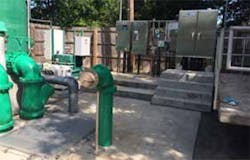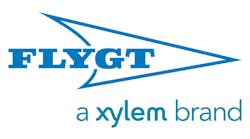James Island, S.C., is nestled amongst the waters of the Charleston Harbor and the meandering Stono and Folly rivers. Once covered in farmland, James Island is now primarily a residential community that has protected the small-town, rural feel its residents and visitors know and enjoy. In this bucolic location, the James Island Public Service District (JIPSD) provides town services for fire protection, wastewater collection, solid waste collection and street name signs to its 24,000 residents.
The JIPSD Wastewater Department is responsible for maintaining the public wastewater collection system, which also serves approximately 13,000 retail customers and one wholesale customer, although the developmental growth on James Island continues to increase the service area. The wastewater collection system consists of gravity pipelines, lift stations and force mains conveying wastewater to Charleston Water System’s Plum Island Treatment Plant. JIPSD’s Wastewater Department maintains 68 pump stations that are part of a system that provides collection services to all wastewater areas of the island, including the Town of James Island, the City of Charleston and the City of Folly Beach.
In 2011, JIPSD commissioned the construction of a wastewater pump station equipped with a pair of submersible pumps powered by drives on a programmable logic controller. It is not uncommon for wastewater pumps to collect fibrous materials that subsequently cause blockages. This phenomenon is known as “ragging,” and it can occur several times a day, requiring a cleaning that is as unpleasant as it is expensive.
Scope
After going online, the new JIPSD submersibles almost immediately began to rag up at night during low-speed, low-flow runtimes. The JIPSD spent some time optimizing the drives by using flying starts to minimize ragging, but they were unable to completely solve the problem. Recognizing that the original pumps were insufficient, JIPSD scheduled the first replacement in 2015.
Due to the project funding regulations, JIPSD required two bidders – Flygt (Xylem) and the manufacturer of the original pump. Flygt actually lost the original project in 2011 due to pricing, but JIPSD had already been building a case internally to include replacement pumps for this station in its 2015 budget because of the clogging.
Fortunately, Flygt happened to have a 35-hp N3171 submersible pump in its central distribution center; it was immediately shipped to JIPSD. The N3171 is a self-cleaning pump that uses Xylem’s N-pump technology to keep the impellers free of debris. Also, by keeping the pump impellers clean of debris, N-pumps utilize less energy. N-pumps feature Class H induction motors designed to deliver outstanding performance and superior heat transfer, long-life seals and low shaft deflection.
The N-design excels in applications where a programmable logic controller drive scenario is used to match diurnal flow with a low speed/long runtime or fewest starts program.
Solution
In April 2015, JIPSD installed the N3171 in position one at the pump station. About two weeks later, it had to remove the original pump from position two for cleaning. The pump in position two had apparently already been ragged up when the first Flygt pump was installed. Since the N3171 was put in place, the utility has had no callouts to that station for low flow or ragging. The Flygt pump cleans the sump so well that the neighboring submersible pump no longer suffers from ragging issues. Regardless, JIPSD intends to order a second N3171.
Results
This application not only highlights the N-pumps’ clog-free design and Flygt’s ability to deliver, but also shows that the N-design excels in applications where a programmable logic controlled drive is used to match diurnal flow with low pump speeds/long pump runtimes.



